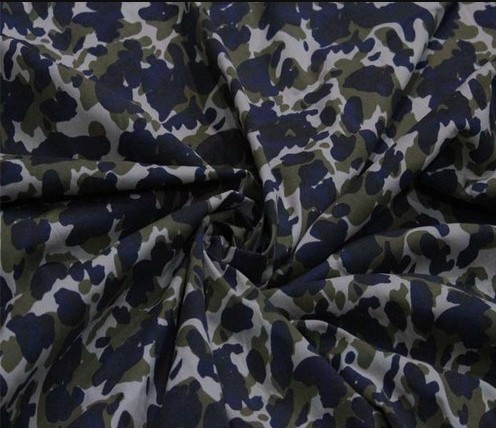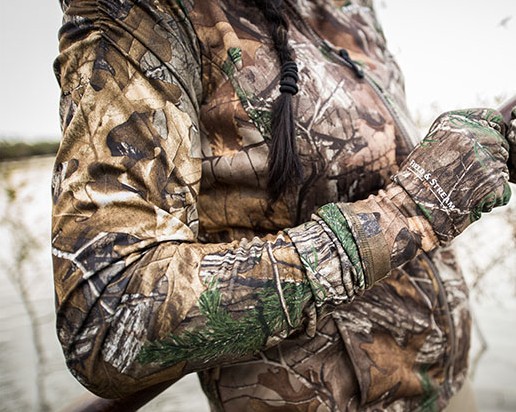As the winter approaches, a lot of hunting enthusiasts are gearing up for the season. From setting the pieces of equipment to arranging all the gears, a lot needs to be done before the season, and one of the major things to consider is hunting wear.

Ideally, hunting wear must be comfortable, allow freedom of movement, be lightweight and water-resistant. All these features and many more are found in polyester, making it one of the go-to hunting fabrics. However, there’s more to it, and in this article, we will know about the benefits of wearing polyester to hunting in more detail.
But before we get there, let’s take a look at the different layers that hunters wear.
What are the Layers For Hunting?

Hunting clothes come in three primary layers:
1. Base Layer
As the name suggests, this layer features clothes that are right against the skin. The primary function of this layer is to wick the moisture from the body, thereby keeping hunters warm and dry.
It’s advisable to choose the weight of the base layer as per the hunting conditions. For instance,
2. Mid-layer
The mid-layer works along with the base layer to trap heat and remove moisture. For hunters, this layer needs to be the most flexible. If required, this layer might have to be doubled (in harsh winter conditions) or removed (if the weather is hot).
3. Outer layer
The outer layer is the first layer of your ensemble and acts as the first line of defense against nature. Therefore, it’s advisable to wear fabrics that repel wind, rain, snow, or other natural elements. Besides, it should be a durable material to stand against the wear tear that might result from tree branches or bushes.
As a base fabric for hunting, polyester is popular for its ease of use and fast-drying capabilities. It’s made from coal, water, air, and petroleum. Unlike wool, which has a defined fiber length between 55mm-130mm, polyester strands are continuous and are known as filaments. However, the filaments can be cut and used in combination with other natural or synthetic fibers.
Polyester Moisture Management
While natural fabrics like merino wool absorb moisture, polyester fabrics are essentially hydrophobic in nature. Thus it cannot absorb moisture to its core like merino wool. For this characteristic, when polyester is used as a base fabric, it retains less moisture when wet than other natural fabrics.
Instead of absorbing the moisture, a polyester base will wick the sweat to the outset layer of the fabric and from thereon evaporate it using capillary action. The moist and warm environment on the skin surface leads to a differential gradient which then moves the moisture along the polyester fiber bringing it to the outside of the fabric. Due to this wicking effect, evaporation through heat loss is reduced, a desirable feature while hunting in colder climates.

Additionally, since polyester fiber is stronger than natural fibers, manufacturers can make lightweight wearables without the fear of tears.
1. Versatile
Polyester is known for its versatility, and one of the biggest advantages is that it can be mixed with other fabrics. As known, blended fabrics maximize the strengths of the multiple fibers present in the fabric. Thus, it’s a popular choice not only for hunters but also for sports personnel. The resulting fabrics are not only lightweight but also durable.
2. Easy maintenance
While on a hunt, there is very little time to maintain your clothes, be it the base layer of your jacket. Thus hunters require clothing that does not need much tending. Polyester fits this bill. Even the best quality polyester is very easy to maintain. Even if hunters get time to dip their clothing in the nearest lake or river, their polyester clothes will dry very quickly. Once the hunting season is over, the clothes can simply be machine washed and stored away, no need to dry clean it.
Thanks to these three top advantages and many more, polyester is a popular choice among hunters. However, there are some downsides to wearing polyester on hunts too.
3. Low Moisture Absorption
As mentioned earlier, polyester wicks the sweat, but it does not absorb it from an individual’s skin. Thus, wearing polyester in hot, humid areas is very uncomfortable as it clings onto the skin, causing discomfort.
However, this issue can be avoided by wearing blended fabrics like polycotton. But again, wearing blended fabrics is not advisable on a hunt.
4. Comfort
Polyester lacks breathability, which puts a damper on the comfort level. Some users also opine that the fabric holds a certain level of static charge, leading to static electricity. Plus, some polyester blends tend to pile as well, which adds to the discomfort and can prove a problem on the hunt.
5. Body Odor Management
Professional hunters might have to play the field for more than a day, sometimes extending to weeks. During this time, they might not have the liberty to change the base layer. However, thanks to its next-to-the-skin property, that does not become a problem as with a polyester base layer. However, since the fabric remains warm and moist, it results in the growth of bacteria and odor.
Though sweat itself does not produce any odor, research reveals that micrococci bacteria break sweat into a chain of amino acids, fatty acids, and other compounds, resulting in a rather unpleasant smell. Unfortunately, the micrococci bacteria blooms well in polyester fabric, thereby reducing its favorability as a hunting fabric. However, some advancement has been made recently to fight this odor-producing characteristic of polyester using silver textile.
Silver is a common natural antimicrobial that does not allow bacteria growth, thereby reducing the chances of body odor.
Is Polyester Good for Hunting?
For most people, polyester is a wise choice for the base layer due to its drying capabilities, ideal for wet and cold regions. Plus, polyester is lightweight, flexible, and highly durable, making it a popular choice among hunters.
Furthermore, thanks to the recent advancements, one of the biggest challenges of using polyester for hunting, body odor, is being managed well. All these developments make polyester a good hunting wear fabric; however, it is about your preference and what you feel comfortable in at the end of the day.




